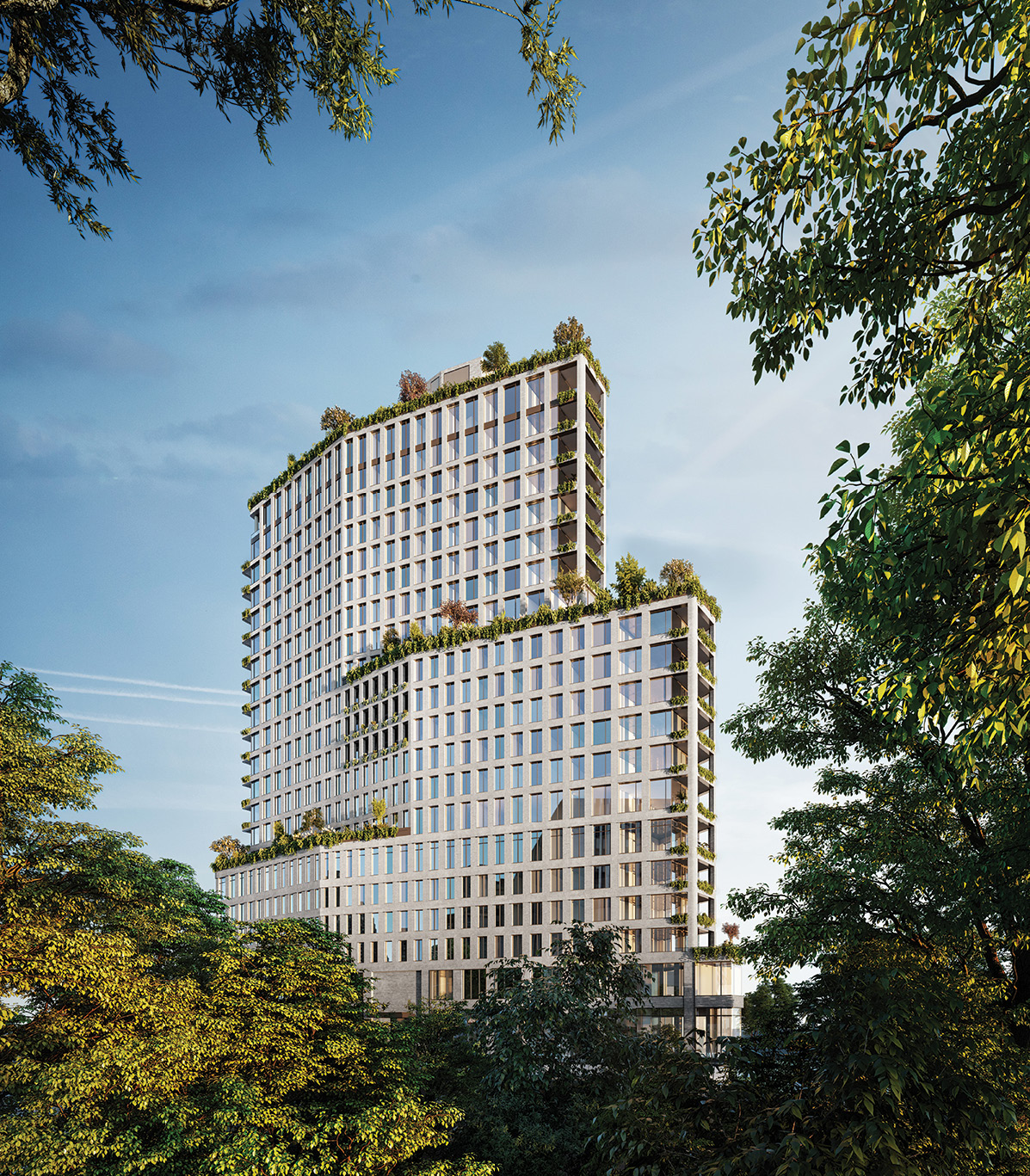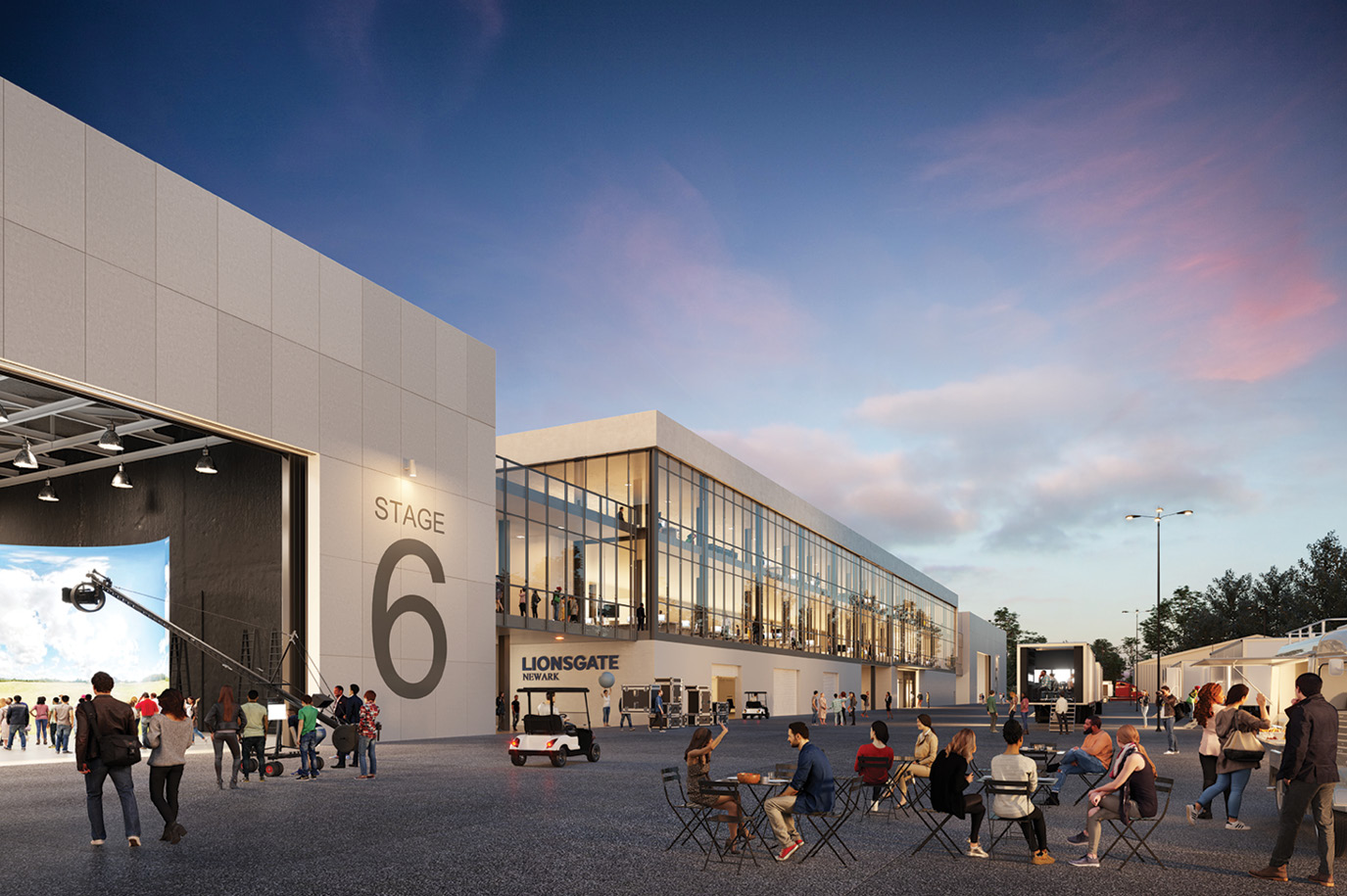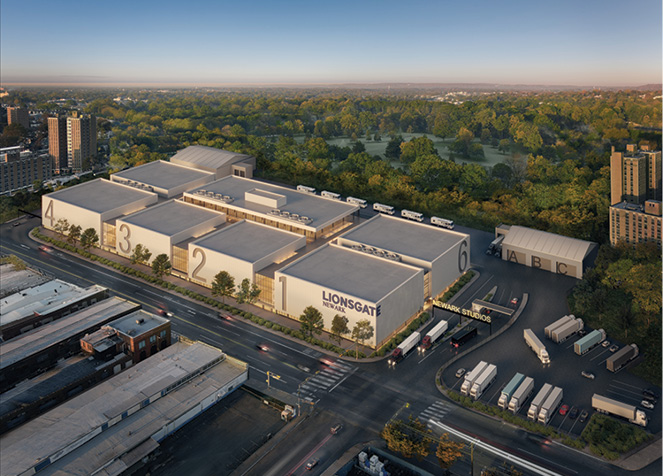Hungry for next-gen talent in your company’s corporate real estate or development pipeline? A case study challenge staged in December by the Colvin Institute of Real Estate Development within the University of Maryland’s School of Architecture, Planning and Preservation offers a glimpse of that talent at work. And the case studies themselves offer glimpses of developments where such talent may cluster.
A common theme? Flexibility and adaptability in navigating the pandemic.
A 25-page case study from a team at Columbia University about the One Boerum Place condo-turned-rental development in Brooklyn, New York, took first place and the $10,000 first prize. A study of the Ion innovation district in Houston from University of Houston students came in second, followed by a study of the Riverworks Eastern Wharf development in Savannah from a team within Clemson University’s Master of Real Estate Development program. Another project in the Northeast took honorable mention as a University at Buffalo team analyzed the redevelopment of the Seneca One building in Buffalo.
The executive summary of the Columbia students’ prize-winning report proclaims that the $250 million One Boerum Place development, spearheaded by Avery Hall Investments in collaboration with Allegra Holdings and Aria Development Group, “stands as a testament to adaptive resilience and strategic urban development.” The mixed-use residential and com¬mercial building was developed on a triangular lot purchased for $76.5 million in 2016 from Brooklyn Law School.
Students Phakorn Chansrichawla, Yang Yang and Derek Le cite David Carlos of Savills Studley, who noted “the ongoing trend of non-profit organizations leveraging their real estate assets to support future initiatives. This transaction represents the law school’s most recent land sale, contributing to its efforts to increase the school’s endowment, which has doubled over the past five years to approximately $225 million.”
The students documented that Downtown Brooklyn is one of Brooklyn’s fastest growing neighborhoods, with a total population of more than 65,000 and a population growth rate of 16.5% that is triple the rate of New York City as a whole. The area is home to some 84,000 jobs with a strong influx of tech jobs over the past decade. Moreover, “77% of residents have a bachelor’s or graduate degree, with the median household income of Downtown Brooklyn at $156,977.”
A pivot from condo to rental was crucial to the project’s success. So were purchased additional air rights from adjacent lots totaling 50,000 sq. ft. of development rights and enough affordable square footage to qualify for New York City’s 421-a tax abatement program. By 2022, One Boerum Place’s 138 units, totaling 250,000 gross sq. ft., were fully leased and retail space was coming online.

A team of students from Columbia University won the Colvin Case Study Challenge with their analysis of the One Boerum Place development on a property formerly belonging to Brooklyn Law School in Brooklyn, New York.
Rendering courtesy of Avery Hall Investments
The tax abatement enabled Avery Hall “to have three maximum years of abatement during construction period, full abatement for two years of operational period and eight years of abatement phase out,” the students write. “This aspect of the project was crucial to the success of a rental project, as the firm needed to have certain benefits guaranteed to ensure that pivoting from a condominium project to a rental project would pencil out. These benefits allowed the switch and were key to convincing all capital partners.”
More Than One Renewal in Buffalo
Never call M&T Bank just another financial institution. Founded and headquartered in Buffalo, its roots go back to its origins in the 1850s as Manufacturers and Traders Bank. It operates across 13 states along the East Coast and contributes to community revitalization in places like Harrisburg, Pennsylvania (where it recently supported innovation and entrepreneurship at Harrisburg University of Science and Technology); Bridgeport, Connecticut; and Harlem, New York. It’s known for having the naming rights to the Baltimore Ravens’ stadium, but there’s no place it likes having its name more than on the $58 million revitalization of Seneca One, the tallest privately owned building in New York outside of New York City, into a tech hub aiming to create 1,000 jobs. The initial redevelopment was pursued by Douglas Development, led by Douglas Jemal, after HSBC and others left the building.
“The Tech Hub will be a catalyst for our emerging tech ecosystem,” said René Jones, then-M&T Bank chairman and CEO, when the hub opened in the 38-story building in April 2021. “This investment will help us attract talent — not only to M&T Bank, but to all companies — and to make our region a magnet for people who want to solve problems and develop solutions that make a difference in people’s lives.”
A year later the bank was part of a group of employers sponsoring a 12-week data analytics bootcamp for around 20 Western New Yorkers in partnership with nonprofit TechBuffalo. Meanwhile, the formerly forlorn property was filling up with tenants like Odoo, Serendipity Labs, Lighthouse Technology Services, AML RightSource and startup competition and accelerator 43North. Now part of the city’s innovation corridor, the Tech Hub is home to around 2,000 M&T personnel, the University at Buffalo students reported in their case study, and could be home soon to a unique amenity: a large indoor dog park.


Great Point Studios is rising on the site of a former low-income housing site in Newark.
Rendering courtesy of Gensler
The students noted that the project was aided by the 2017 overhaul of the city’s zoning into what’s known as the Buffalo Green Code, reinforcing walkable, mixed-use neighborhoods and economic activity centers. It was also helped by a mortgage tax exemption and Payment In Lieu of Taxes Increment Financing (PIF) granted by the the Erie County Industrial Development Agency, which reduced project costs by around $2.5 million.
Today the phrase “tech hub” means something different in Buffalo, as the case study students’ own University at Buffalo launches a Center for Advanced Semiconductor Technologies as part of the Buffalo-Rochester-Syracuse region earning a federal Tech Hub designation via the CHIPS & Science Act.
Meanwhile, the redevelopment beat goes on: The Central Terminal Restoration Corporation (CTRC) and the City of Buffalo in February selected the development partners for the $300 million historic reuse transformation of Buffalo’s Central Terminal. CB Emmanuel Realty LLC, The Alexander Company and Rise Community Capital, will develop the former train station into a mixed-use campus. “Once completed, this space will transform into a bustling lifestyle hub, offering affordable housing, green space and entertainment,” said Tom Kucharski, president and CEO of Invest Buffalo Niagara. “The Central Terminal project, alongside other development areas in Buffalo’s East Side, aims to drive economic growth, preserve our city’s heritage and prioritize equity and inclusion for residents.”
Showtime in New Jersey
The New Jersey Economic Development Authority is celebrating its 50th anniversary year with its own support of redevelopment. It was announced in early February that the state’s new Aspire tax credits will support the development of 577,900 sq. ft. of mixed-use space surrounding the New Jersey Performing Arts Center (NJPAC) in Newark. The project, known as NJPAC District and being developed by LMXD, an affiliate of L+M Development, “will connect the existing NJPAC location with the larger Newark community through significant investment in public space, in addition to mixed-use real estate development,” said the NJEDA, “serving as a touchpoint between the city’s downtown and the new Riverfront Park.”
Aspire is a place-based economic development program created under the New Jersey Economic Recovery Act of 2020 to support mixed-use, transit-oriented development with tax credits to commercial and residential real estate development projects that have financing gaps. All residential Aspire projects containing newly constructed units must include at least 20% affordable housing.
“From its earliest imaginings more than a generation ago, NJPAC was designed as a unique anchor cultural institution in service to the city of Newark and the state of New Jersey,” said NJPAC President & CEO John Schreiber. “Our audiences, staff and programming reflect the remarkable diversity of the many communities we serve. Today’s landmark tax credit award makes possible the exciting next phase of the Arts Center’s evolution, and the dynamic neighborhood we will build on our campus will help further elevate downtown Newark’s status as a 24/7 live, work and play destination.”
The redevelopment momentum in Newark also is carrying over to another form of entertainment-anchored activity, as the $125 million Great Point Studios film and TV production studio backed by NJPAC and Lionsgate progresses in Newark’s South Ward at the site of the former Seth Boyden Housing site. Other film studio projects in the state include the $1 billion, 300-acre site being developed by Netflix at Fort Monmouth and other complexes in Carteret and Bayonne.

